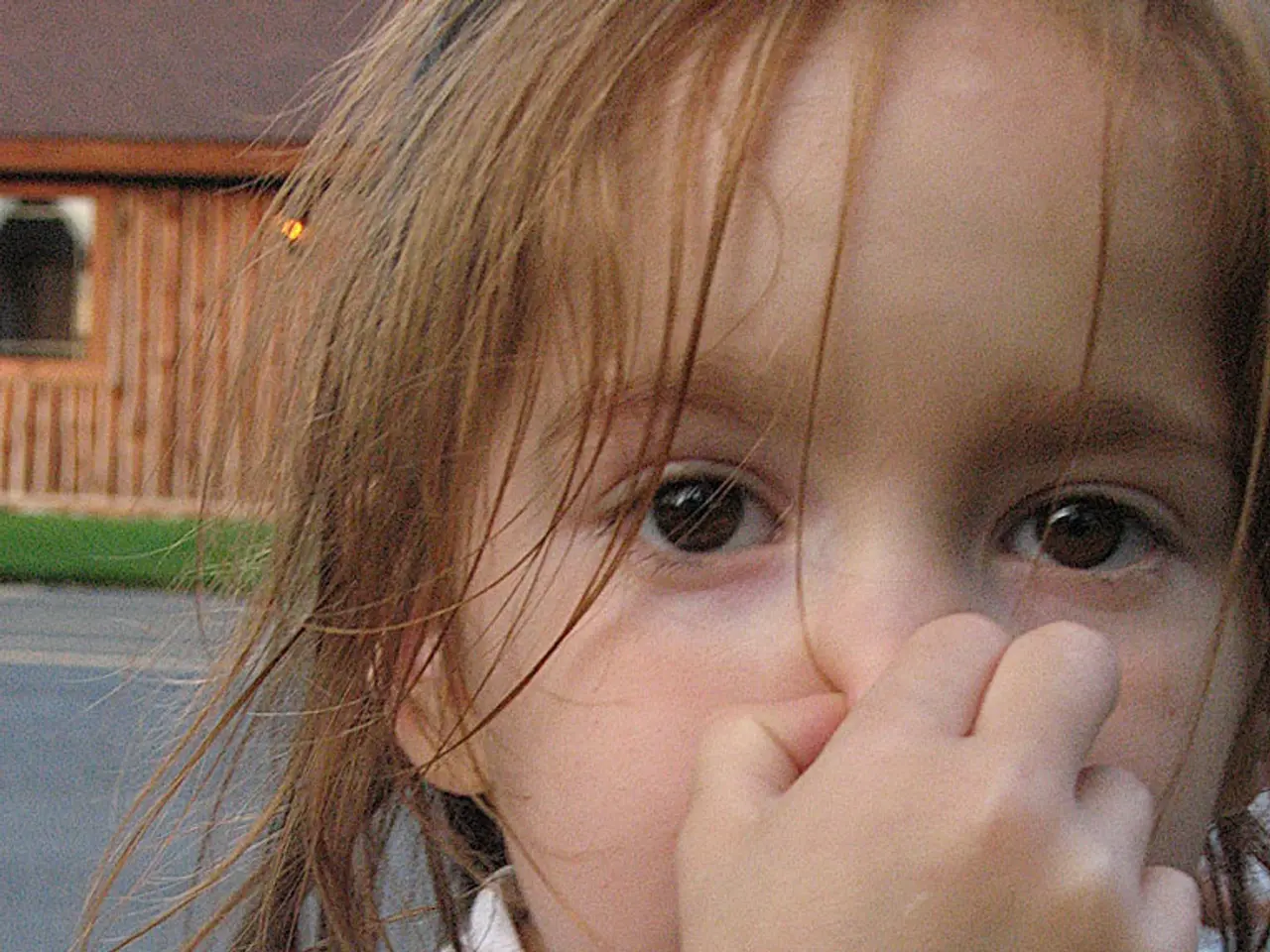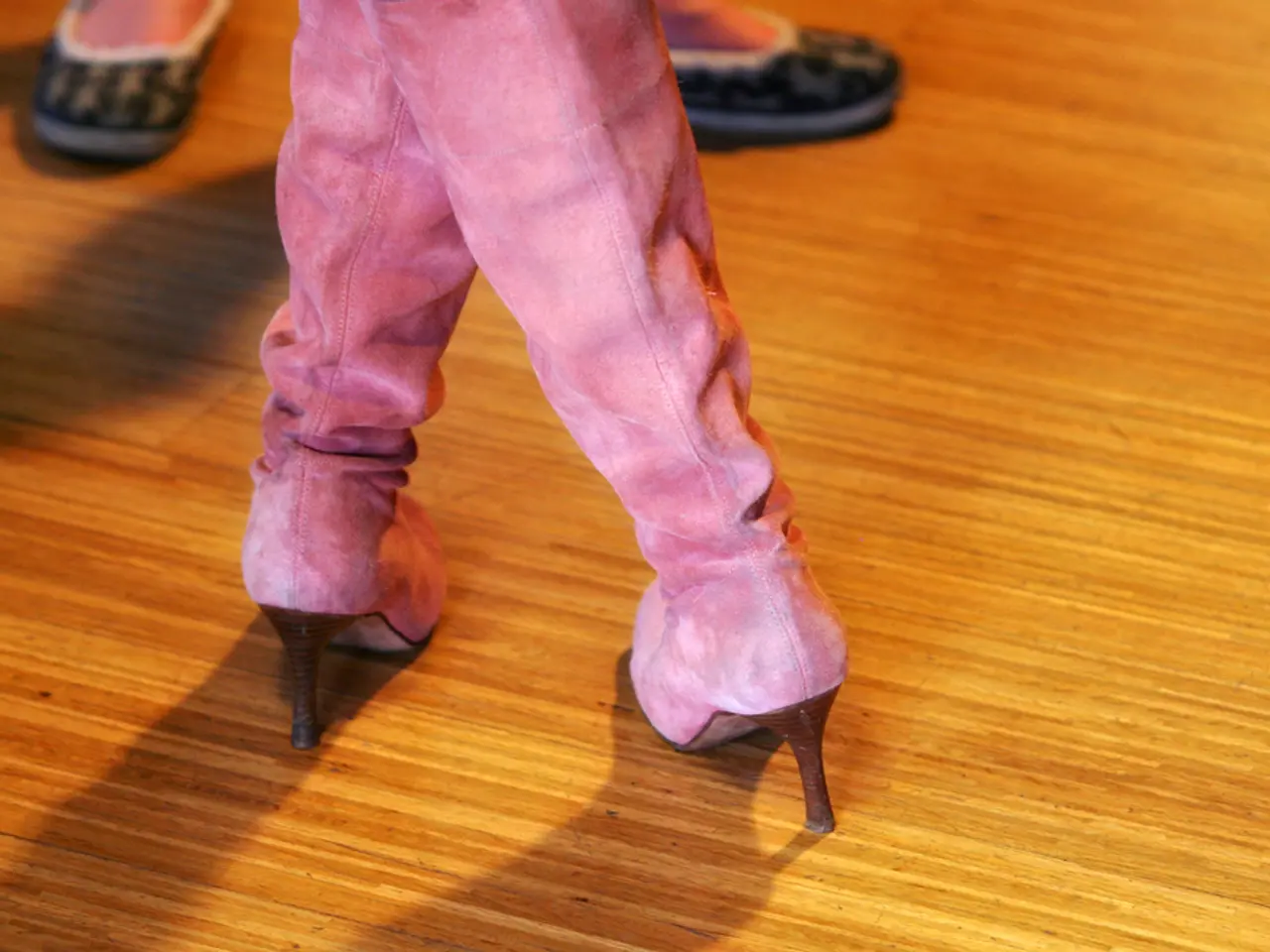Identifying a Broken Nose: Home Management, Medical Intervention, and Healing Process
A broken nose, also known as a nasal fracture, can often be distinguished from a sprain or strain in the nasal area through careful evaluation of symptoms, physical examination, and sometimes imaging. Here are the key differences:
## Symptoms Comparison
When it comes to symptoms, a broken nose typically presents with moderate to severe pain near the site of impact, prominent swelling, common bruising under the eyes ("black eyes"), frequent nosebleeds, and sometimes a visible deformity or crooked appearance. On the other hand, a sprain or strain in the nasal area usually causes mild to moderate pain, generally localized, less severe swelling, rare or mild bruising, occasional nosebleeds, and no visible deformity.
## Key Differences
One of the most telling signs of a broken nose is visible deformity or misalignment, especially when compared to before the injury. A crackling sound when touching or moving the nose is also strongly suggestive of a fracture, not a sprain or strain. Black eyes and persistent nosebleeds are more common with a nasal fracture than with a sprain or strain.
## Examination
A healthcare professional will inspect the nose for deformity and swelling, palpate gently for crepitus or movement, check for bruising under the eyes or on the bridge of the nose, perform an internal exam to assess for bleeding, septal hematoma, or obstruction, and may order imaging (X-ray or CT scan) if a fracture is suspected, especially if the injury is recent or the appearance is unclear.
## When to Seek Medical Help
Any uncertainty or severe symptoms should prompt a medical evaluation for proper diagnosis and treatment. This includes visible deformity or misalignment of the nose, severe pain, crackling sound, numbness/tingling, persistent nosebleed or breathing difficulty, and symptoms that do not improve after 5–7 days.
## Summary
A broken nose is characterized by deformity, bruising under the eyes, persistent nosebleeds, and sometimes a crackling sound. Sprains or strains in the nasal area are generally milder, without deformity or significant bruising, and do not usually cause a crackle or persistent bleeding. Any uncertainty or severe symptoms should prompt a medical evaluation for proper diagnosis and treatment.
Surgery may be necessary after 2 to 3 months following the injury to allow swelling to go down and bones to heal. Common causes of a broken nose include violence, falls, accidents, sporting injuries, and traveling in a motor vehicle without a seatbelt. Self-care for a broken nose at home includes treating nosebleeds, applying an ice pack, taking over-the-counter pain relievers, treating minor wounds, elevating the head, and avoiding picking or blowing the nose. Further investigations might sometimes be necessary, such as a CT scan or an X-ray, to check for other injuries or complications.
Immediate medical attention is necessary if there is severe or persistent bleeding, it becomes difficult to breathe, there is a large open wound on the face, there is broken glass or other debris inside the nose, or if an adult or child has signs of a head injury such as clear, watery fluid coming out of the nose, severe headache, blurred vision, loss of consciousness, difficulty speaking or moving, confusion or memory loss, seizures, or if they are unconscious.
Prevention tips include wearing protective clothing and a helmet when playing contact sports and engaging in activities with a risk of falls or collisions, wearing a seatbelt at all times when traveling in a motor vehicle, wearing suitable shoes to prevent falls, using walking sticks or other mobility aids if unsteady when moving about, and taking extra precautions to safeguard children against falls and other accidents.
- Aq, in the context of workplace-wellness, could be a policy or program aiming to improve mental health and chronic diseases like bipolar, depression, ulcerative colitis, asthma, and obesity in the workplace.
- Science continues to investigate the effects of CBD on various health-and-wellness aspects, ranging from mental-health benefits to potential therapies-and-treatments for chronic-diseases like bipolar and depression.
- The practice of skin-care is essential for maintaining overall health and wellness, but it's equally important to be aware of skin-sensitive conditions like acne, eczema, or psoriasis, given their impact on mental-health and well-being.
- Obesity is one of the chronic-diseases that can be linked to poor nutrition, inactivity, and a lack of fitness-and-exercise, which subsequently contributes to a higher risk of other chronic-diseases like diabetes, heart disease, and asthma.
- People with mental-health conditions like bipolar or depression, as well as chronic-diseases such as colitis or asthma, may benefit from predictive approaches that forecast health declines or exacerbations based on personal factors such as lifestyle, medication adherence, and stress levels.
- In a workplace-wellness program, various initiatives could include providing resources on mental-health, chronic diseases like obesity and colitis, along with supporting fitness-and-exercise programs, nutritional guidance, and stress-management techniques.
- For those suffering from acute medical-conditions like a broken nose, or chronic-diseases like bipolar or obesity, adopting a holistic approach that combines medical-treatments, mental-health therapies, proper nutrition, and regular fitness-and-exercise can greatly improve overall health and well-being.
- When it comes to employees' health, well-being, and productivity in the workplace, addressing chronic-diseases like bipolar, obesity, and colitis, and offering support for mental-health and fitness-and-exercise initiatives can create a healthier, more productive work environment.
- Health-and-wellness educators can provide valuable information on various topics like mental-health, chronic diseases (such as bipolar, obesity, colitis), fitness-and-exercise, nutrition, and skin-care to help individuals make informed choices leading to a better quality of life.




